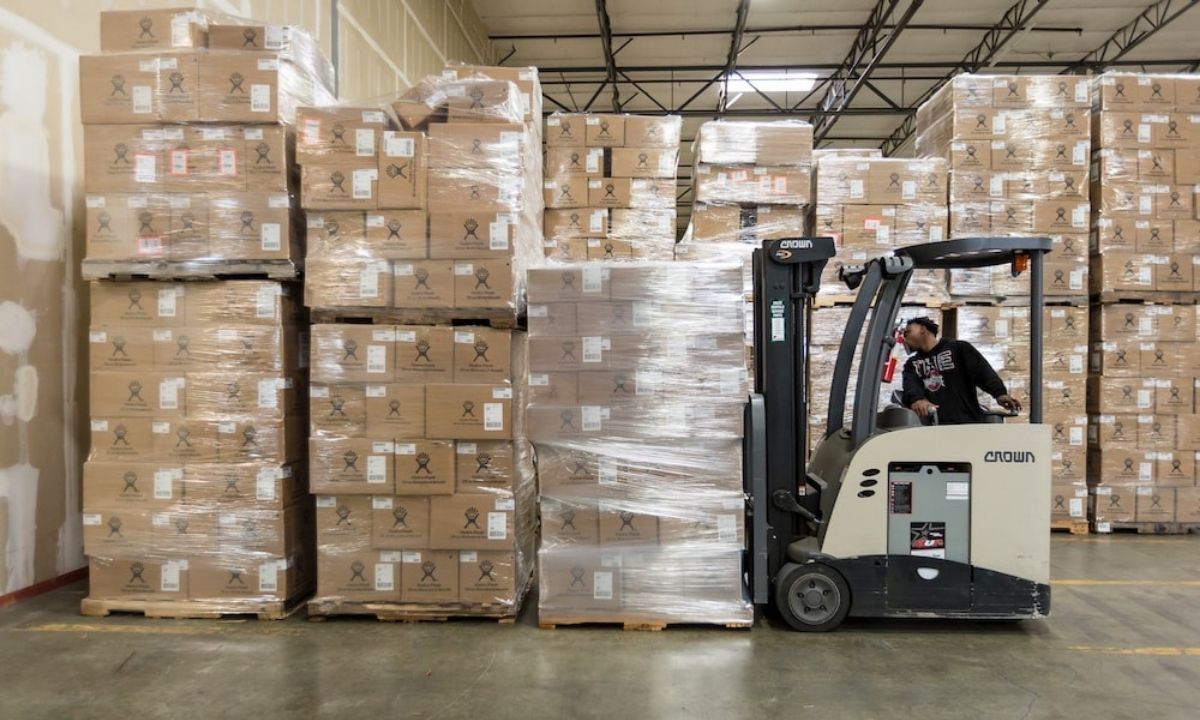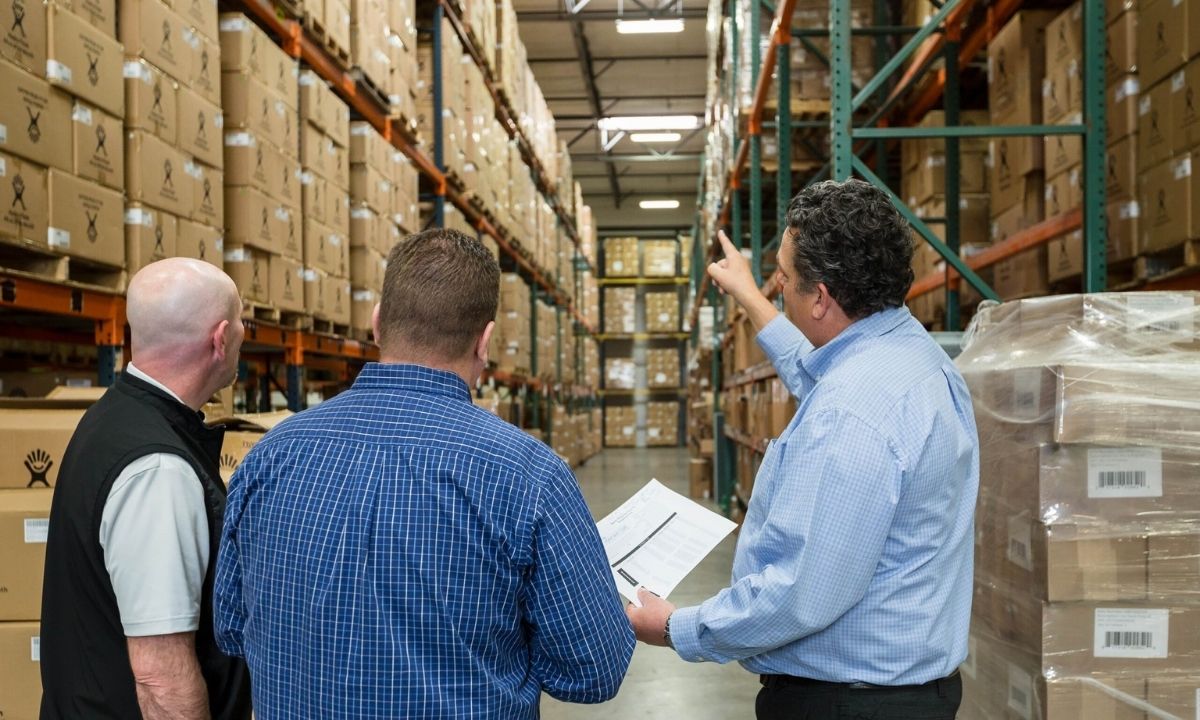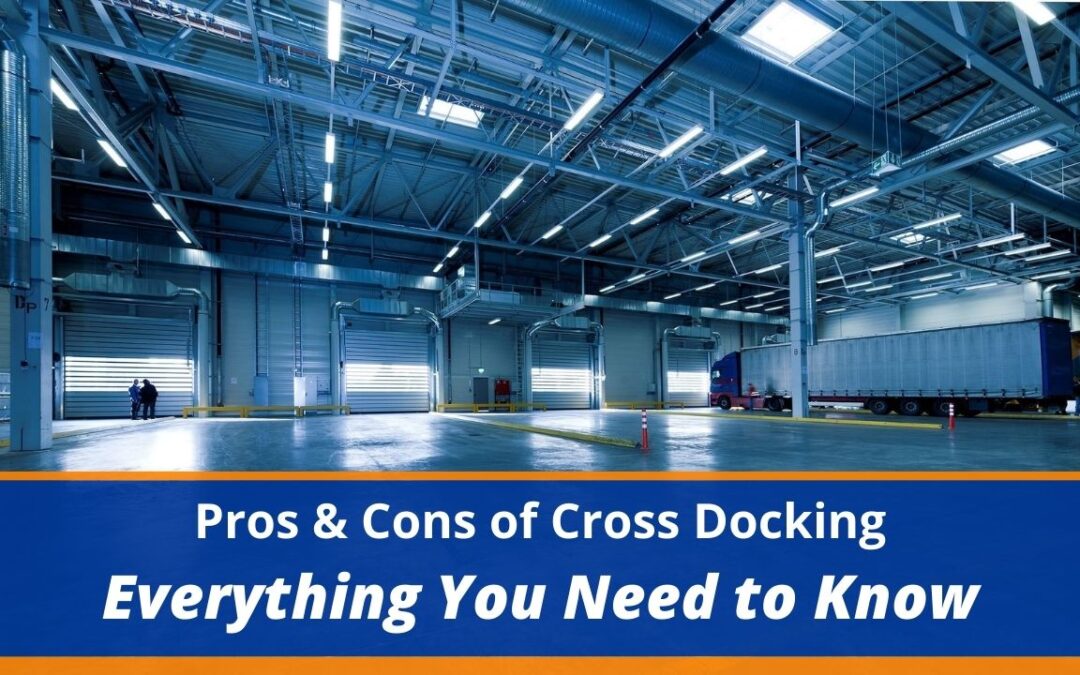Cross-docking is one of several strategies employed by companies in the U.S. and around the world to limit risk and reduce logistics costs during the ongoing supply-chain crisis. But what does the term cross docking mean, and how does it work?
In simple terms, cross-docking is a logistics strategy that reduces – or even eliminates – the need for storage in a given supply chain. Cross-docking, also called transloading, involves moving goods from one transport vehicle to the next directly, with minimal to no warehousing or material handling. Goods are delivered to a warehouse or dock, where they are promptly sorted and reloaded onto outbound trucks or rail cars for delivery.
In many cases, cross-docking results in leaner, more streamlined supply chains. However, it’s not always a net benefit. In some situations, traditional warehousing is a safer and more efficient option. Keep reading to learn about the pros and cons of cross-docking and if it’s the right strategy for your business.

Pros of Cross Docking
What are the advantages of cross-docking? There are a few benefits to consider, depending on your unique business and logistics model.
1. Adjust supply to meet demand.
As consumer preferences, expectations, prices, and other market factors shift over time, the demand for some products can fluctuate. If you overestimate demand, you may end up storing goods for longer than necessary, which can limit profits. With a cross-docking strategy, you can source and ship products based on actual demand, which is often more efficient and cost-effective.
2. Take advantage of lower storage and labor costs.
A cross-docking warehouse can significantly reduce your storage-related expenses, since this strategy limits the need to store goods for long periods of time. With the ongoing warehouse space shortage, this can yield substantial cost savings. By minimizing warehousing requirements, you can also reduce the need for material handling, which results in lower labor-related costs as well.
3. Benefit from the reduced risk of product damage.
With cross-docking, goods are unloaded from an inbound carrier and immediately reloaded onto one or more outbound carriers. Since products don’t need to be sorted and moved in and out of storage areas, the need for material handling is significantly reduced. This protects you from the risk of product damage, loss of inventory, and potential human errors.
4. Enjoy improved efficiency.
During the cross-docking process, products bound for the same destination can be conveniently consolidated into fewer vehicles. Conversely, large shipments with multiple destinations can be easily broken down into smaller groups for easy and efficient delivery. This can yield substantial savings of time, labor, and cost.
Cons of Cross Docking
Here are a few of the potential drawbacks of utilizing a cross-docking strategy:
1. Detailed planning is required.
One of the downsides of cross-docking is the level of in-depth planning and effective coordination it necessitates. Since you can’t rely on large quantities of excess storage for quick order fulfillment, you need to be careful and purposeful. This strategy requires you to analyze supply/demand trends, keep up-to-date and accurate shipment schedules, and communicate clearly and consistently with suppliers.
2. Reliable suppliers are essential.
One of the advantages of cross-docking is that orders can be fulfilled more quickly and efficiently. However, when you’re up against tight deadlines and need to make deliveries on time, reliable suppliers are absolutely necessary to ensure goods can be shipped to customers quickly and accurately. Unfortunately, counting on suppliers during a supply-chain crisis can be riskier than in normal circumstances.
3. More transport carriers may be needed.
With a cross-docking strategy, it’s especially important that there are enough transport carriers available at any given time – since goods are sorted and shipped out immediately, sometimes to a variety of destinations at a time. That’s why cross-docking may require a larger fleet of trucks and additional equipment to ensure deliveries are made in a timely fashion.

When should cross-docking be used?
The pros and cons of cross-docking can depend on your specific business model. It can be a highly effective logistics strategy under the right circumstances. Here are a few scenarios in which employing a cross-docking strategy can be especially beneficial:
- When demand for a product is relatively stable. This enables you to establish a recurring fulfillment schedule that takes advantage of the efficiencies of cross-docking, and then make small adjustments as demand shifts over time.
- When you need to ship time-sensitive or perishable goods. If you’re shipping products that have a limited shelf life, cross-docking can help ensure your cargo reaches your customers or retailers with time to spare.
- When you know you can rely on your supply chain partners. If you rely on suppliers to meet their deadlines in order for you to meet yours, a cross-docking strategy can be riskier. If you know you can count on your suppliers to make their deliveries on time, cross-docking carries much less risk.
- When you’re shipping large or bulky items. Cross-docking can be advantageous when you need to ship items like appliances or furniture, for which customers generally expect a specific delivery period. Rather than warehousing these large and difficult-to-store items, retailers can often conveniently fulfill orders from a single facility.
While cross-docking can improve outcomes in some situations, there are circumstances when it’s not advisable. If you don’t have reliable and consistent suppliers or demand for your goods fluctuates dramatically and suddenly, a more traditional warehousing and order-fulfillment strategy is likely a safer, simpler, and ultimately more profitable approach.

Get a Customized Quote for Cross Docking & Other Logistics Services
Fortune 500 companies continue to count on Bridgetown Trucking to get their goods where they need to go. That’s because we’ve built a reputation of reliability, thoroughness, and genuine concern for our partners’ success.
Whether you’re pursuing a cross-docking strategy, require long- or short-term storage, or you need a combination of the two, we can get the job done right. We’re always transparent about costs and fees. We only hire the best drivers and logistics professionals in the business and we operate a large, cutting-edge fleet of transport vehicles.
In addition to our cross-docking services, we offer comprehensive logistics services to meet all your needs, including:
- Dedicated trucking
- Flatbed trucking
- Air-freight delivery and pickup
- Ocean and rail container transport
- Integrated warehousing and order-fulfillment services
Contact us today to let us know how we can help! Give us as much information as possible so we can serve you better and provide you with a prompt and accurate quote.


Merci pour ces détails sur les spécificités du cross docking
Thanks for the note — glad the cross-docking breakdown helped. When it’s done right, freight just moves smoother.
—
Merci pour le message — content que l’explication sur le cross-docking ait aidé. Bien fait, ça fait circuler le fret beaucoup plus vite.